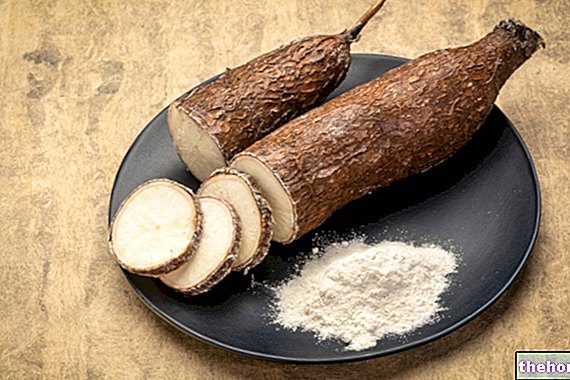The two types of fonio
Fonio is a cereal belonging to the millet family. There are two main types:
- Digitaria exilis. This white grain grows from Senegal to Chad, as well as in central Nigeria. It is the more commonly consumed of the two varieties and more readily available outside of Africa.
- Digitaria iburua. This white grain has black or brown spikelets and grows mainly in parts of Nigeria, Togo and Benin.
, sodium and fat, 50 grams of dry fonio contain:
- Calories: 190
- Protein: 3 grams
- Sugar: 0 grams
- Fat: 0.6 grams
- Carbohydrates: 40 grams
- Fiber: 4% of the daily requirement
- Iron: 4% of the daily requirement
Fonio is a good source of B vitamins, including thiamin, riboflavin and niacin, which are necessary for cell growth, development and function, as well as for energy production. At the food level, i.e. as a use in the kitchen, it is comparable to the more common rice. Compared to other cereals, however, it contains more carbohydrates and fewer lipids.
Another advantage is the richness of mineral salts such as calcium, magnesium, zinc and manganese. It also contains good percentages of iron and essential amino acids, such as methionine and cystine, necessary for our body which is unable to produce them. Iron and copper help form red blood cells, connective tissue and blood cells, while zinc plays a role in immune function, protein synthesis, and cell growth and division.
of animal origin or with a high protein content. Although its protein composition is comparable to that of white rice, fonio boasts significantly higher amounts of amino acids containing sulfur, methionine - essential for skin elasticity, hair growth, in nail health and in the growth and repair of body tissues - and cysteine, a non-essential amino acid required for protein synthesis and detoxification. It also plays a role in the formation of the amino acid taurine. Both of these amino acids are lacking in grains such as corn, wheat, rice, sorghum and barley. With the exception of lysine, a typical serving of fonio can satisfy about 10% of the daily requirement of essential amino acids. of an adult.
Digestible and beneficial for the intestine
Fonio is consumed in its entirety and is therefore considered a whole grain. Unlike refined grains where the germ and bran are removed during processing, whole grains include all three parts of the kernel: bran, endosperm, and germ. Whole grains can help weight management and bowel health, regulate intestinal transit and reduce the risk of colorectal and stomach cancer.
Low glycemic index
Fonio contains resistant starch, which resists digestion and absorption in the small intestine. Resistant starches have many health benefits and may play a role in "increasing insulin sensitivity and" lowering blood sugar levels. Additionally, this cereal has a low glycemic index, which means it does not rise rapidly. blood sugar levels.For this reason, it can be added to the balanced diet followed by people with diabetes.
Gluten free
Fonio is a naturally gluten-free cereal, therefore it is safe for people with gluten sensitivity or celiac disease, eliminating the symptoms of abdominal bloating, irritable bowel, nausea and fatigue, typical of intolerant subjects when they eat foods that contain gluten, a group of proteins present in wheat, barley and rye.
and the aromas of the food with which it is prepared. In West Africa, fonio is traditionally cooked as couscous, made into a porridge and used fermented for the production of local beverages. Like other grains, it can be ground into a flour and used in baked goods, such as bread, biscuits and cakes. Here are some ideas in the kitchen.
- Replace fonio with any cereal, including rice, couscous, millet, sorghum, quinoa, and barley.
- Use it in porridge the same way you would use oats.
- Add it to soups and stews.
- Sprinkle it on salads.
- Use fonio flour in baked goods such as bread, cookies, cakes and bars.




























